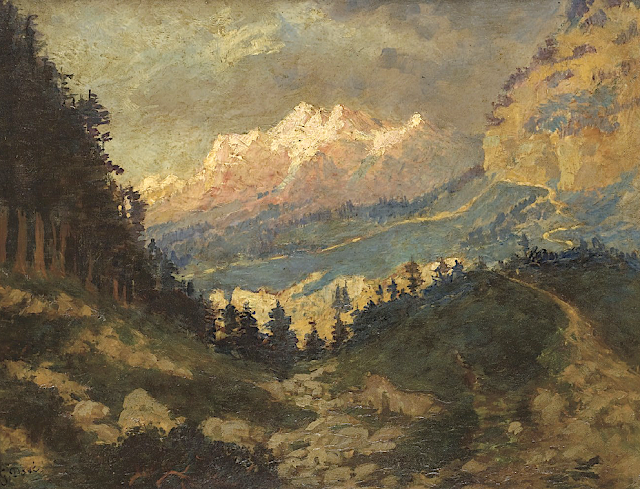The mountain
The Grand Combin is a mountain massif in the western Pennine Alps in Switzerland. With its 4,314 metres (14,154 ft) highest summit, the Combin de Grafeneire, it is one of the highest peaks in the Alps and the second most prominent of its range. The Grand Combin is also a large glaciated massif consisting of several summits, among which three are above 4000 metres:
- Combin de Grafeneire (4,314 m -14,154 ft),
- Combin de Valsorey (4,183 m -13,724 ft),
- Combin de la Tsessette (4,134 m -13,563 ft).
The massif of the Grand Combin lies south of Verbier between the Val d'Entremont (west) and Val de Bagnes (west). The north-western facing side of Grand Combin is entirely covered by eternal snows and glaciers which are prone to serac falls. The southern and eastern walls are more steep and thus exempt of snow.
The topography of the Grand Combin is intricate. Between the Val d'Entremont and the Val de Bagnes are two high ridges, nearly parallel to each other and to those valleys, which both diverge from a short transverse ridge of great height. The southern end of the space enclosed between these three ridges is an elevated plateau of great extent, where the snows accumulate and feed the Corbassière Glacier which descends thence for about ten kilometers to the north. The glacier is surrounded by the peaks of Petit Combin, Combin de Corbassière and Combin de Boveire on the west, Grand Tavé and Tournelon Blanc on the east. Smaller glaciers lie on the external flanks such as Boveire and Mont Durand Glacier.
The Grand Combin, which yields in height to only a few European mountains, was long one of the least known of Alpine summits. The first to commence the exploration of the great massif which separates the Val de Bagnes from the Val d'Entremont was Gottlieb Samuel Studer, of Berne, who on August 14, 1851 reached for the first time the summit of the Combin de Corbassière with the guide Joseph-Benjamin Fellay, and has published an account of that and a subsequent excursion in Bergund Gletscher-Fahrten. He was followed in that ascent five years later by W. and C. E. Mathews, and in 1857, William Mathews anticipated Studer in the ascent of the second peak of the Grand Combin.
The first four expeditions on Grand Combin reached only the minor summit east of Grand Combin (Aiguille du Croissant). The first one was made by mountain guides from the valley (Maurice Fellay and Jouvence Bruchez) on July 20, 1857. The first complete ascent of Grand Combin was finally made on July 30, 1859 by Charles Sainte-Claire Deville with Daniel, Emmanuel and Gaspard Balleys, and Basile Dorsaz.
The Grand Combin de Valsorey on the west was reached for the first time on 16 September 1872 by J. H. Isler and J. Gillioz. They climbed the south south face above the Plateau du Couloir. The itinerary on the south-east ridge was opened on 10 September 1891 by O. Glynne Jones, A.Bovier and P. Gaspoz.
The "Penitents", those reliefs of ice that one see rising on the surface of the glacier of the Grand Combin, in this 1787 painting, have all disappeared at the beginning of 21th century, because of global warming...
The painter
Sir Jean-François Albanis Beaumont, draughtsman, aquatint engraver, and landscape painter, was born in Chambery in 1753, but naturalized in England. He studied classics in Chambéry and when he was 17 years old went to Paris. He studied 4 years at the Royal College of Engineering of Mézières and received several commissions in the Bourbonnais.
Returning in 1775 to Chambéry, he designed the decorations for the celebrations of the marriage of Clotilde de France and Prince Charles-Emmanuel. Engineer Filippo Nicolis di Robilant encouraged him to work for king Victor Amadeus III, who placed him with the chief engineer of the county of Nice, where he took part in the important works underway in Port Lympia. He was inscribed on April 30, 1780, in the class of civil architects of the University of Turin.
He accompanied the Duke of Gloucester, William Frederick of Hanover in his Grand Tour (Germany, Italy, France and Switzerland), who subsequently entrusted him with the education of his children. He then settled in Britain and married an Englishwoman of Protestant religion.
In 1787 he began to publish his first works illustrated with his own drawings "Picturesque travel to the Pennine Alps", "Historical and picturesque journey of the County of Nice", "Journey through the Rhaetian Alps in 1786", "Selected views of antiquities And ports in the south of France "and" Travel through the Maritime Alps".
In 1796, his mission was completed and he could return to Savoie and settle near Genevawhere in 1798 he bought a small agricultural estate on the commune of Thônex with which he planned to enter the trade of wool. He does not find the success expected and must soon resell everything and resume his work as geographer and traveler.
In 1800, he published "Journey in the Alps Lepontine from France to Italy" and then "Description of the Greek and Cote Alps" (1802 and 1806).
In 1810, he died at the monastery of Sixt of which he became the owner. He had resumed the exploitation of the iron mines, but he faced too many difficulties. He is buried on the spot.
The views of the towns and landscapes he drew are very sought after and give an idea of the appearance of these places at the time.


